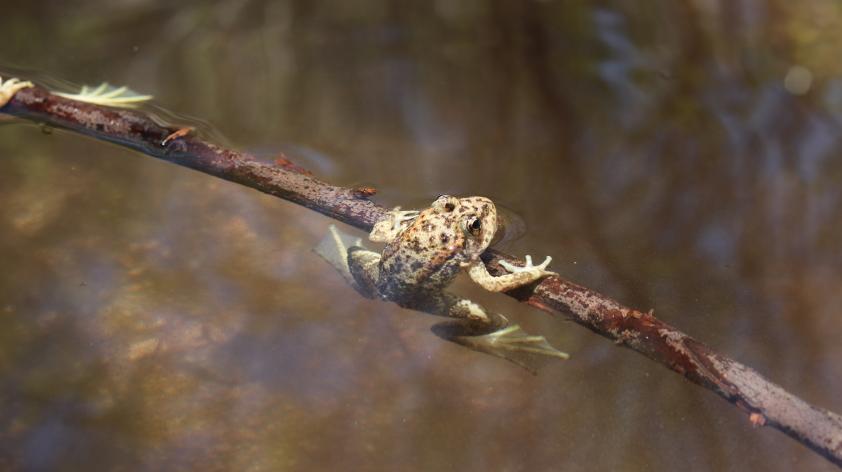
"Hopping" for the Best Outcome
On June 19, 2018, San Diego Zoo Global researchers embarked on a lofty project: 259 endangered mountain yellow-legged frogs (MYLF) were reintroduced in the San Bernardino Mountains. This was the largest reintroduction of froglets by ICR in the program’s reintroduction history!
This release was notably different from our past reintroductions, in that the frogs were divided into either a soft or a hard release group. Frogs in the hard release group were reintroduced into the stream directly from the transport bucket, with little to no acclimation period. Whereas the froglets in the soft-release group were housed for 7 days in soft release enclosures, which were custom built to provide a predator-protected environment where the frogs could acclimate to the environmental conditions of the release site.
A hard release is how we typically release the mountain yellow-legged frogs. However, data from frogs recaptured during last year’s post-release surveys showed that hard-released froglets moved an average of 121m in just 3 months following release. The purpose of this experiment was to examine how a soft vs. hard release may affect long distance dispersal movements, stress levels and establishment of long-term territories at the release site.
With the help of a few volunteers, we deployed six soft release cages into a stream in the San Bernardino Mountains. Each enclosure was approximately 1.5m x .7m x .7m and housed between 21 and 22 frogs. The enclosures were constructed with a mesh fabric, a PVC pipe frame, and a zipper opening to allow easy access to the frogs throughout the acclimation period.
Each enclosure was furnished with floating platforms, artificial leaf litter, and vegetation from the surrounding habitat, to encourage natural behaviors such as basking, foraging and seeking shelter. Environmental data was collected inside the enclosures for the entire duration of the trial with the use of data loggers programmed to collect, air and water temperature, light level and humidity every hour. Camera traps were deployed to capture any event or activity that might occur outside of the enclosures.
Throughout the acclimation period, researchers conducted daily health checks on all the frogs. During the daily checks the frogs were offered a combination of insects from their captive diet (eg. crickets, flies, beetles and worms) and insects found throughout the habitat. Terrestrial insects were collected by sweep-netting adjacent vegetation, while aquatic insects were collected with a small dip net.
Frogs from both treatment groups were released on the same day at the same time. 129 frogs were released from their mesh enclosures and 130 froglets were released from their transport buckets.
We will conduct post-release surveys at the release site over the next 4 weeks, then monthly through September or October. Stay tuned!













